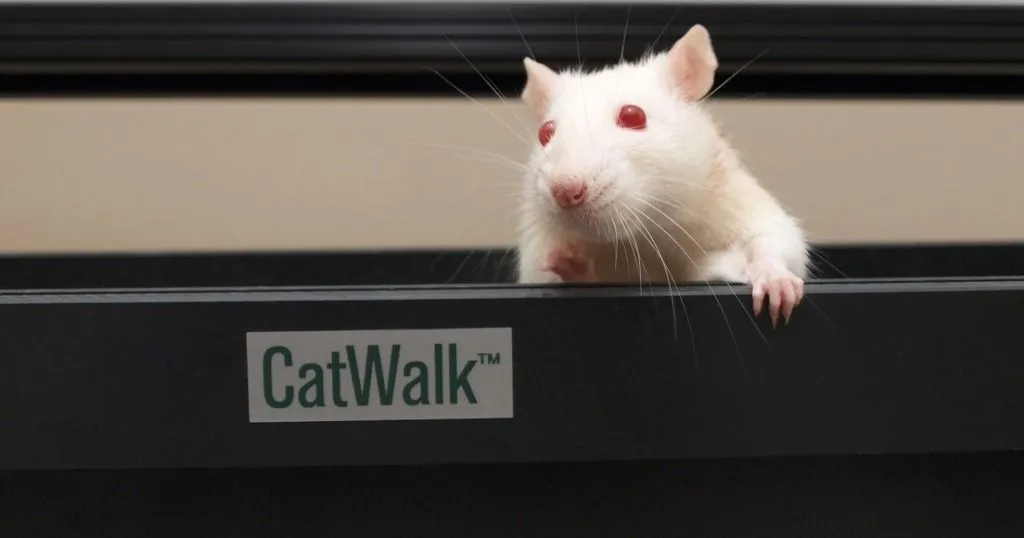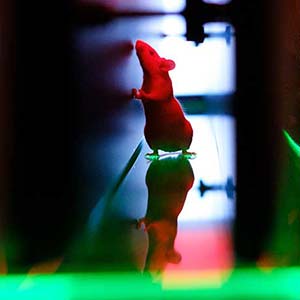Using CatWalk gait analysis to study monoarthritis in mice
Researchers are always looking for new ways to alleviate symptoms of arthritis. The CatWalk XT has been shown to be very useful in research involving arthritis in rodent models.
Posted by
Published on
Thu 19 Sep. 2013
Topics
| Arthritis | CatWalk XT | Gait | Gait Analysis | Mice |
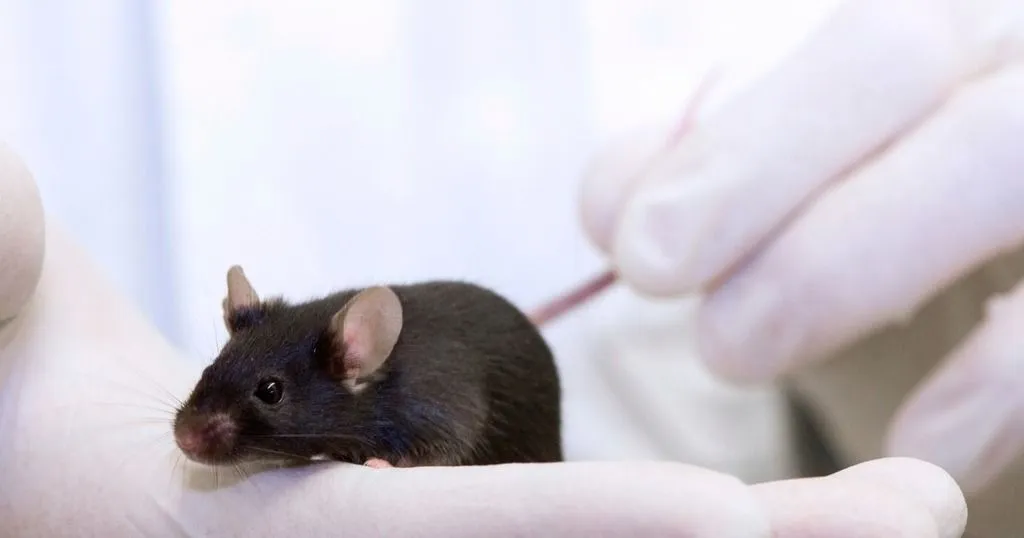
Researchers are always looking for new ways to alleviate symptoms of arthritis. The CatWalk XT has been shown to be very useful in research involving arthritis in rodent models. Most of the research done on arthritis with CatWalk has been done with rats, but Parvathy et al. decided that they would use mice in their experiment, being that mice are frequently used in disease studies and they are the preferred animal for genetic modifications when studying biology and disease. The researchers looked at both static and dynamic parameters in this experiment.
Methods
Researchers injected two groups of mice with the same amount but different types of liquid in their right hind leg. A third group was run through the experiment prior to using the two injected groups to collect baseline data. The control group received phosphate buffered saline (PBS) to make sure that the results were not affected by the injection or the amount of liquid. The experimental group was injected with complete Freund’s adjuvant (CFA), which is used extensively for inducing arthritis in mice. Both were compared against the baseline data (mice with no injection) to see if there was a difference. If the mice exhibited signs of arthritis, they were treated with a dose of indomethacin, a non-steroidal anti-inflammatory drug used commonly to treat arthritis, and made to walk at 1, 2, and 3 hours after treatment.
Parameters used
Both static and dynamic parameters were used in this experiment. The three static parameters were interlimb coordination, paw pressure, and paw print area. Interlimb coordination was measured as the time spent with a normal walking pattern, paw pressure was measured by the intensity of the light where the footsteps showed up using CatWalk, and paw print area was the space that the foot occupied when it touched the walkway. The dynamic parameters used were stance phase, swing phase, duty cycle, stride length, and swing speed. Stance phase was measured by how long the paw touched the floor and swing phase was measured by how long the paw was in the air. Duty cycle was stance duration as a percentage of the step cycle duration. Stride length was the distance between steps of the same paw. Swing speed was the speed of a paw while it was in the air.
Results after injection
There was a significant decrease in all of the static parameters after mice were injected in the right hind leg with CFA. Some mice stopped using their right hind leg completely. The mice injected with PBS showed no significant difference in interlimb coordination, paw pressure, or paw print area when compared with the baseline data. With the dynamic parameters, duration of stance, duty cycle, and swing speed all decreased significantly. Duration of swing phase increased significantly and stride length did not change significantly. Altogether, this indicates that the mice with CFA injected were trying to spend less time and apply less pressure on their right hind leg, thus less of things like paw pressure and swing speed. Duration of swing phase increased because the rodent took more time to set its foot down.
Results after drug
After being injected with indomethacin, it was found that the amount needed to alleviate the symptoms of arthritis in the mice was 10mg/kg. For the static parameters, treatments alleviated paw pressure and print area deficits at 1, 2, and 3 hours after treatment, though the effect of the drug was most significant at two hours after treatment. 10mg/kg of indomethacin also alleviated the effects of dynamic parameters at 1, 2, and 3 hours after injection, but showed the most significant effect at 2 hours. Swing phase duration was more sensitive to treatment with indomethacin, and was alleviated by a lower dose.
Conclusion
The change in static and dynamic gait parameters in CFA-induced monoarthritic mice is able to be quantified by CatWalk. Also, the extent of alleviation was able to be quantified. In fact, CatWalk XT produced quantifiable and easy-to-reproduce data which got rid of observer bias. Changes in gait parameters were not due to the injection or volume of the liquid, because the control group ended up matching up with the baseline data. Most importantly, though, the deficits and alleviation by drug treatment corresponded to what can be seen in humans, showing that using mice as a model organism and CatWalk to quantify data is an effective way to study drugs for CFA-induced arthritis.
Reference
Parvathy, S.S.; Masocha, W. (2013). Gait analysis of C57BL/6 mice with complete Freund’s adjuvant-induced arthritis using the CatWalk system. BMC Musculoskeletal Disorders, 14(14), 1-9.
Related Posts
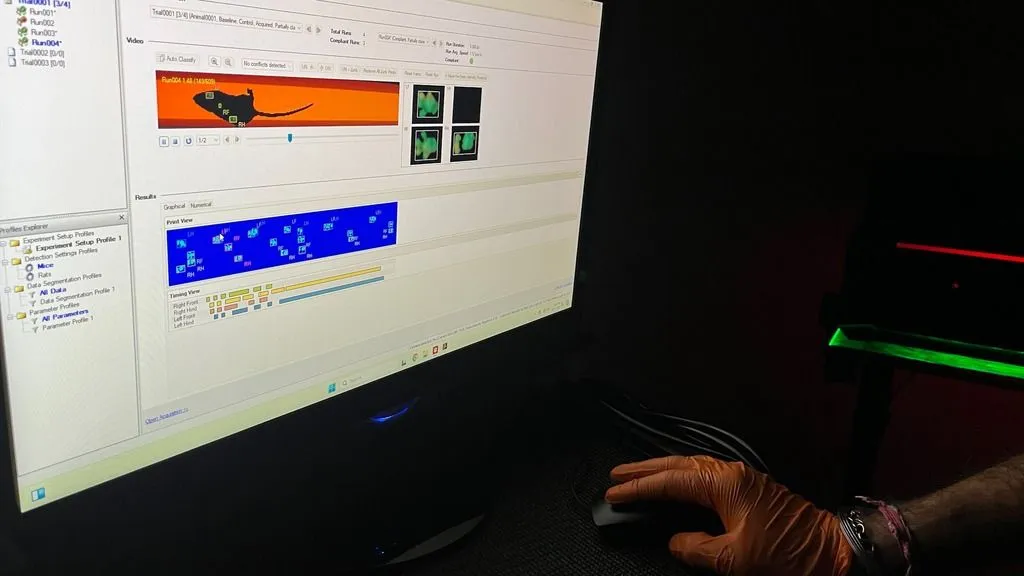
FAQ: tips and tricks for CatWalk XT
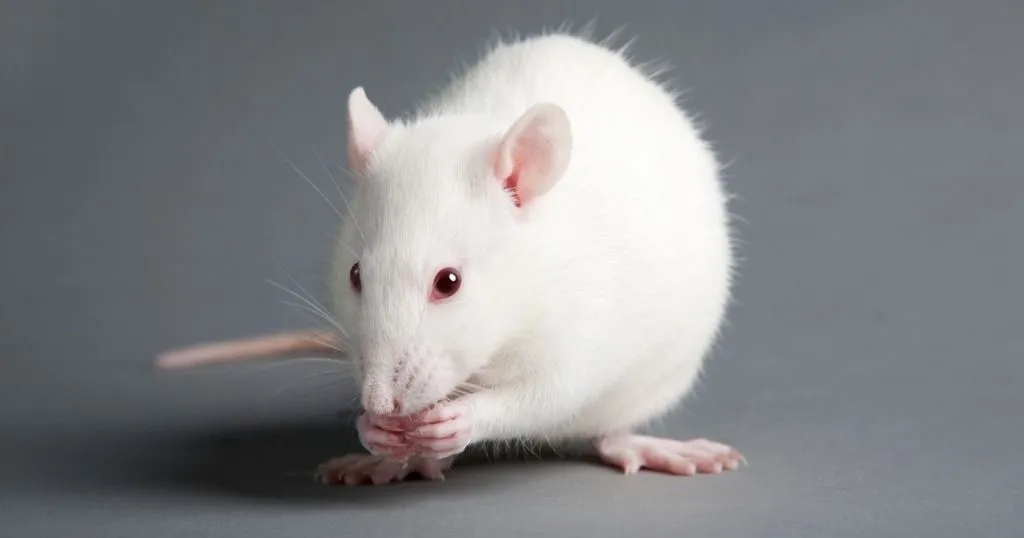
Gait analysis after a bone fracture
